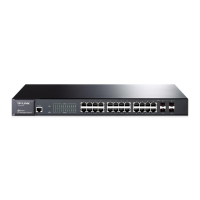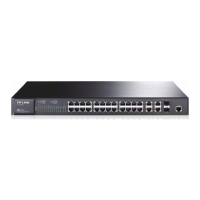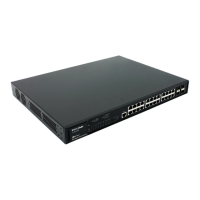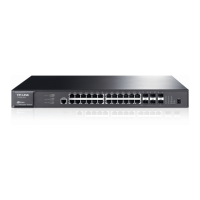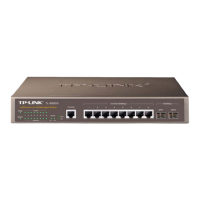143
Chapter 10 Routing
Routing is the method by which the host or gateway decides where to send the datagram. Routing
is the task of finding a path from a sender to a desired destination. It may be able to send the
datagram directly to the destination, if that destination is on one of the networks that are directly
connected to the host or gateway. However, what if the destination is not directly reachable? The
host or gateway will attempt to send the datagram to a gateway that is nearer to the destination.
The goal of a routing protocol is very simple: It is to supply the information that is needed to do
routing. This chapter describes how to configure the IPv4 unicast routing on the T2700G-28TQ.
10.1 Interface
Interface is a virtual interface in Layer 3 mode and mainly used for realizing the Layer 3
connectivity between VLANs or routed ports. Each VLAN interface is corresponding to one VLAN.
Each routed port is corresponding to one port. Loopback Interface is purely software implemented.
Interface has its own IP address and subnet mask to identify the subnet it belongs to, and it works
as the gateway of the subnet to forward Layer 3 IP packets.
Choose the menu Routing→Interface→Interface Config to load the following page.
Figure 10-1 Interface Config
The following entries are displayed on this screen:
ID, or routed port.
IP Address Mode: Specify IP Address allocation mode.
None: without ip.
Static: setup manually.
DHCP: allocated through DHCP.
BOOTP: allocated through BOOTP.
IP Address: Specify the IP address of the interface.
Subnet Mask: Specify the subnet mask of the interface's IP address.
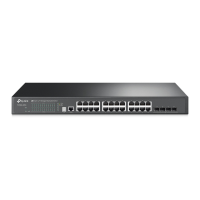
